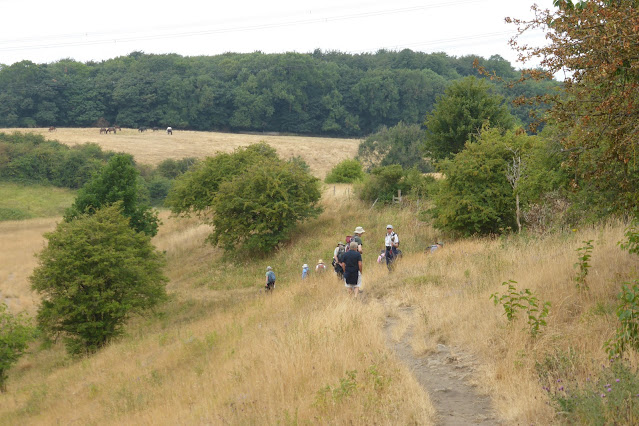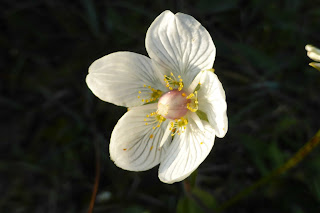 |
| Clustered Bellflower growing in the scorched meadow after Monday and Tuesdays record temperatures (almost 40 degrees) |
still in the same county of
North Yorkshire.
 |
| Joyce Simmons gives an introductory talk. The YWT carpark is full, but they have arranged permission to park in a small area the bone dry meadow next to it. |
 |
| Barberry flowers |
 |
| Barberry Rust |
 |
| Don Grant showed us some Elm-leaved Blackberry - Rubus ulmifolius in the hedgerow |
 |
| I soon got way behind, Paul obligingly waited. We are heading for the patch of woodland ahead. |
 |
| Part of the woodland had had some conifers cleared about 7 years earlier. Natural regeneration was taking place, However some extra trees had been planted - here we are looking at a planted Small-leaved Lime. |
 |
| The small leaved lime has rust coloured hairs where the veins join the main vein |
 |
| Silver Washed Fritillary we think |
 |
| Large Skipper |
 |
| Comma |
 |
| Meadow Brown |
 |
| This is a Pretty Chalk Carpet moth that had been caught early in the morning. See distribution map below |
 |
| Distribution of Pretty Chalk Carpet Moth Our dot is the one just to the right of Leeds |
 |
| At the foot of the north facing Pantlife Meadow on the south bank of the stream |
 |
| After the reports, a member Don Grant tells us about an interesting specimen he has found near where he lives, Manna Ash he has found in Wakefield. |















.jpg)





